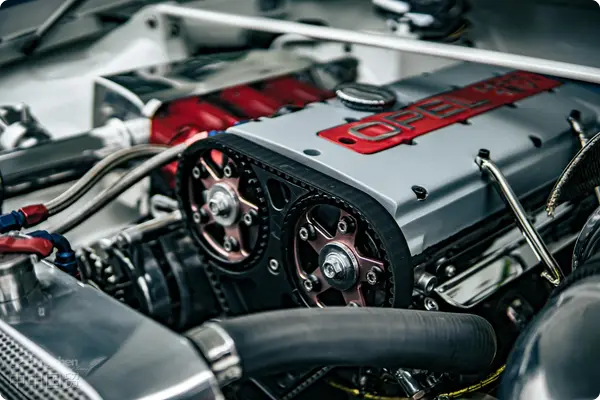- Shanghai Zhongshen International Trade Co., Ltd. - Two decades of trade agency expertise.
- Service Hotline: 139 1787 2118

Automotive partsImport RepresentationTime Efficiency Analysis: Process Optimization and Time Management from a Professional Perspective
Introduction
Against the backdrop of highly specialized global automotive supply chains, auto parts imports have become a crucial component in Chinas automotive manufacturing, maintenance, and modification markets. With 20 years of experience as anExport Representationimport service expert, we fully understand how import timelines critically impact supply chain efficiency and cost control for businesses. This article provides a professional breakdown of auto parts import agency time cycles, key influencing factors, and optimization strategies, offering decision-making references for industry clients.
I. Standard Time Framework for Auto Parts Import Agency
The complete process of auto parts import agency typically spans20-60 days, with specific durations affected by multiple variables. Below is a breakdown of the standardized process:
1.Preparatory Phase (3-7 days)
- Supplier Negotiations and Contract Signing: Includes confirmation of price terms (e.g., FOB/CIF), delivery schedules, and quality standards.
- Pre - review of documents: Verification ofIt is recommended to verify through the following methods:, quality certifications (such as EU e-mark, U.S. DOT certification), Chinese labeling, and other document compliance requirements.
- Import Qualification Registration: For first-time importers, completion of customs consignee registration and electronic port IC card application is required.
2.International Transportation Phase (Maritime Transportation/Air Transportation/Land Transport)
- Ocean Shipping (Primary Method):
- Europe/North America to Chinese Ports: 25-40 days (including booking, cargo consolidation, and port operations)
- Southeast Asia to Chinese Ports: 7-15 days
- Air Freight (Urgent Requirements): 5-10 days (costs 3-5 times higher than ocean shipping)
- China-Europe Railway Express(Balanced Option): 18-25 days, suitable for high-value parts with time sensitivity
3.Customs Clearance and Inspection (3-10 days)
- Declaration and Tax Payment: 1-2 days (electronic declaration, requires prior confirmation of HS codes and tax rates)
- customs inspection: If selected for inspection (auto parts inspection rate approximately 10%-15%), adds 3-5 days
- 3CCertification Verification: Safety-related parts (e.g., brake pads, seat belts) require CCC certification or exemption proof
4.Domestic Distribution (1-3 days)
- Trunk transportation from port to destination warehouse is affected by distribution distance and logistics resources
II. Core variables affecting lead time and response strategies
1.Document compliance issues (maximum delay risk)
- Typical problems:
- Overseas shippers omitting accessory model numbers and material information
- Discrepancy between certificate of origin and physical product label information
- Missing energy efficiency labels (e.g.New energyvehicle battery components)
- Optimized Solution:
- Establish standardized document pre-review checklist, requiring suppliers to provide PDF templates for advance verification
- For high-risk categories (e.g. emission-related components), apply for advance classification ruling from customs
2.Trade-offs in transportation mode selection
- Cost-lead time model recommendations:
| Component Type | Recommended transportation methods | Total cycle time | Cost ratio (baseline: sea freight=1) | ||
|---|---|---|---|---|---|
| — | — | — | — | ||
| — | — | — | — | ||
| — | — | — | — |
3.Management of hidden time in customs clearance
- Customs supervision trends: Since 2023, China Customs has increased inspection intensity by 20% for auto parts involving environmental protection and intellectual property (e.g. brand logo infringement)
- Value Points of Agency Services:
- Advance declaration: Utilize two-step declaration mechanism to shorten clearance time
- Customs data AI pre-review: Train models using historical declaration data to reduce document rejection rate
III. Practical case: How to reduce import cycle by 30%
Case Background: A new energy vehicle company importing motor controllers (HS: 85371090) had goods detained by customs due to missing labels during first shipment, causing 2-week project delay.
Optimized Solution:
1.Supply chain front-end intervention:
- Require suppliers to print Chinese recycling labels compliant with GB/T 18455 on packaging
- Add not for individual sale labels to avoid 3C certification issues
2.Logistics path restructuring: - European factory → Hamburg port sea shipment to Ningbo port (original path: Rotterdam port → Shanghai port)
- Select Ningbo ports auto parts dedicated channel, saving 2 days of port detention time
3.Clearance prediction mechanism: - Prepare Solid Waste Attribute Identification Report for Imported Goods in advance based on product composition (containing rare earth elements)
Achievements: The import cycle has been reduced from the initial 52 days to 36 days, with an 18% decrease in overall supply chain costs.
IV. Industry Trends and Future Efficiency Optimization Directions
1.Application of digital tools:
- Blockchain traceability: Real-time tracking of components full-chain status from overseas factories to domestic warehouses
- Customs robots (RPA): Automatically capture ERP data to generate customs declarations, reducing manual entry errors
2.Regionalized warehouse layout:
- Establish buffer warehouses in free trade zones or comprehensive bonded zones, utilizing the bonded one-day tour model to handle urgent orders
3.Leveraging policy dividends:
- RCEP member country origin accumulation rules: Prioritize procurement from ASEAN secondary suppliers to enjoy tariff reductions and fast customs clearance
Conclusion
Timeliness management for automotive parts import agency is a systematic project that requires integrating front, middle, and back-end supply chain resources. Enterprises should establish a time cost accounting model, incorporating logistics, customs affairs, and warehousing into a unified management system. Choosing agency service providers with automotive industry know-how can significantly reduce compliance risks and achieve controllable import cycles.
---: The data in this article is based on 2023 cases from major Chinese ports and customs practices. Specific projects should be subject to real-time policies and contract terms.
Related Recommendations
? 2025. All Rights Reserved. Shanghai ICP No. 2023007705-2  PSB Record: Shanghai No.31011502009912
PSB Record: Shanghai No.31011502009912









